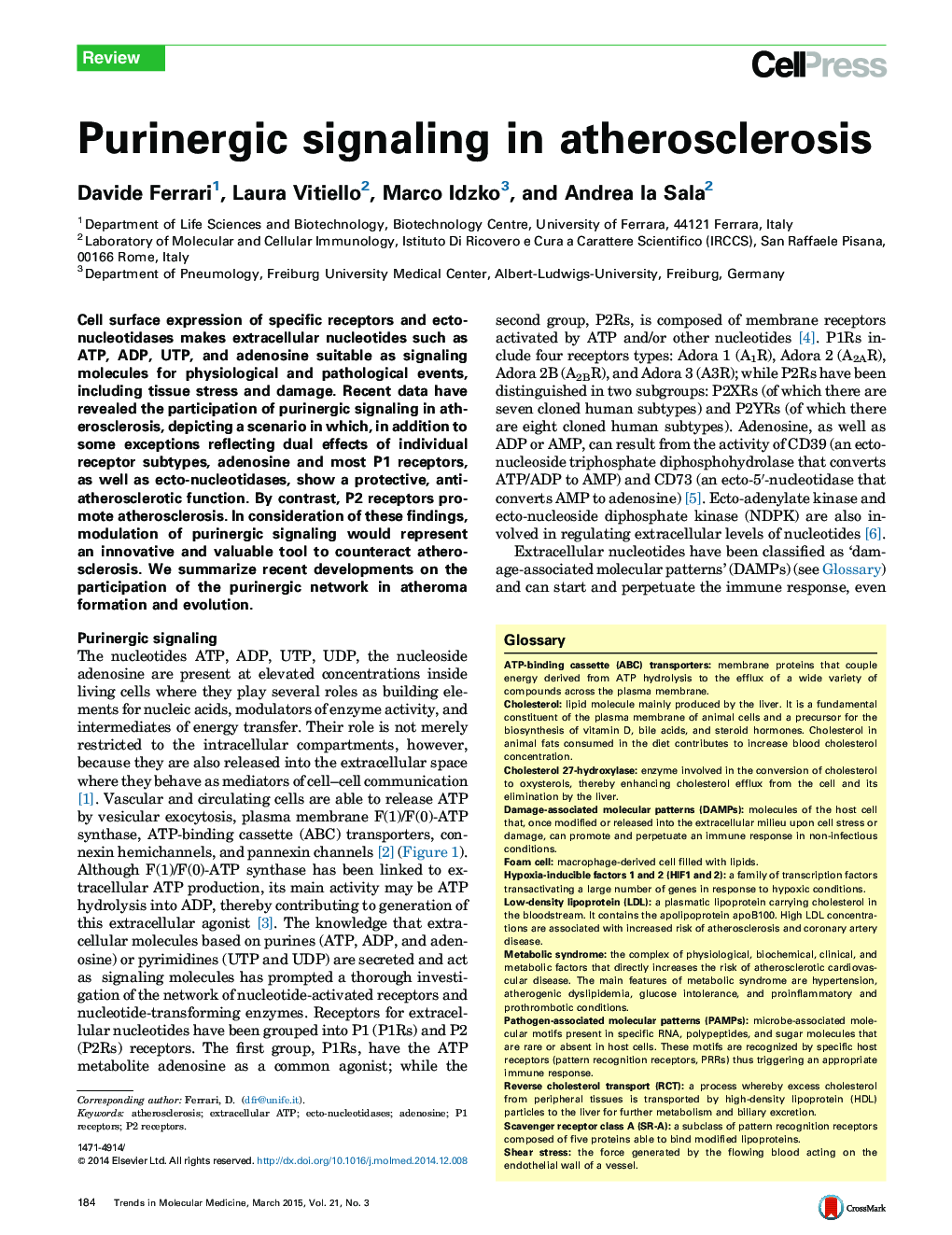| Article ID | Journal | Published Year | Pages | File Type |
|---|---|---|---|---|
| 2838337 | Trends in Molecular Medicine | 2015 | 9 Pages |
•Atherosclerosis is a leading cause of mortality.•Purinergic signaling is involved in atherogenesis.•Pro- and anti-atherosclerotic responses are mediated by extracellular nucleotides.•Removing excess ATP and increasing adenosine is protective against atherosclerosis.
Cell surface expression of specific receptors and ecto-nucleotidases makes extracellular nucleotides such as ATP, ADP, UTP, and adenosine suitable as signaling molecules for physiological and pathological events, including tissue stress and damage. Recent data have revealed the participation of purinergic signaling in atherosclerosis, depicting a scenario in which, in addition to some exceptions reflecting dual effects of individual receptor subtypes, adenosine and most P1 receptors, as well as ecto-nucleotidases, show a protective, anti-atherosclerotic function. By contrast, P2 receptors promote atherosclerosis. In consideration of these findings, modulation of purinergic signaling would represent an innovative and valuable tool to counteract atherosclerosis. We summarize recent developments on the participation of the purinergic network in atheroma formation and evolution.
